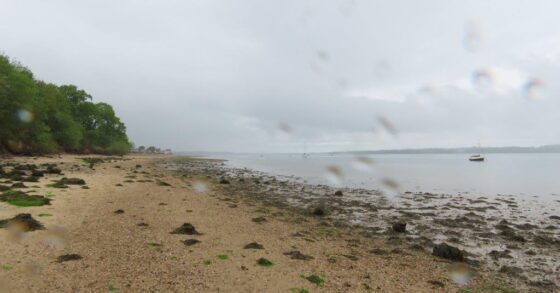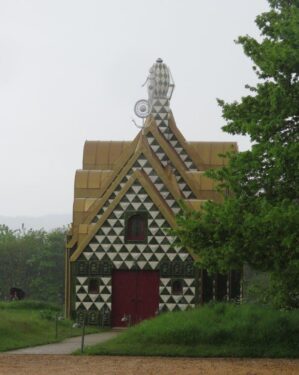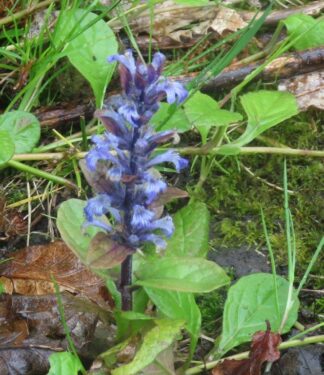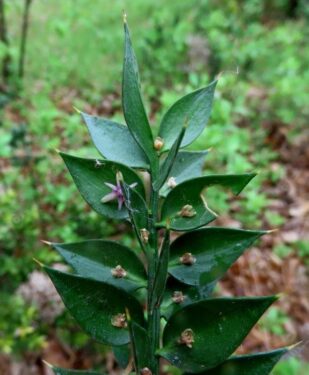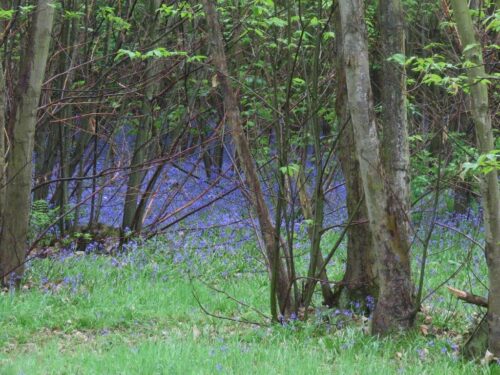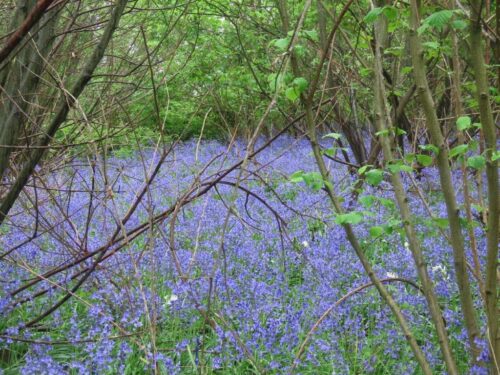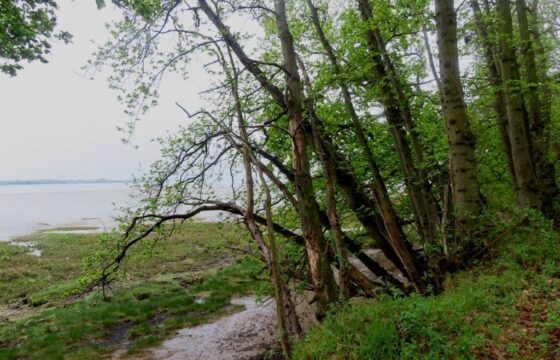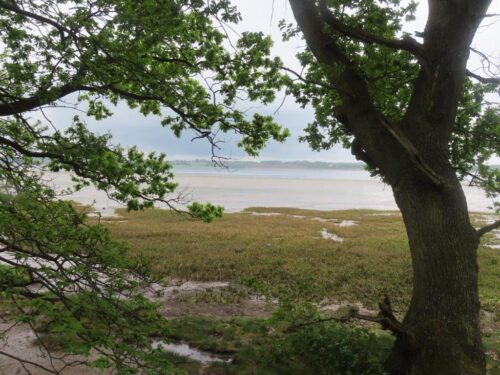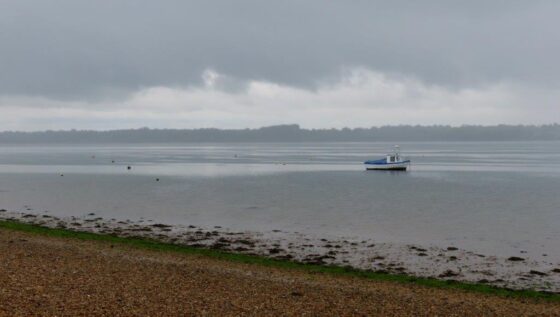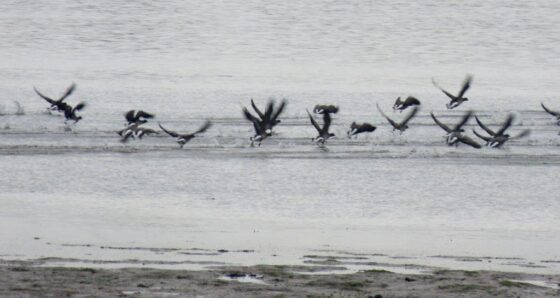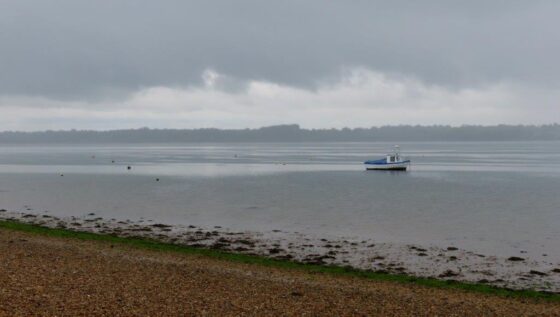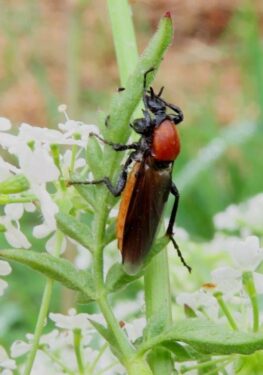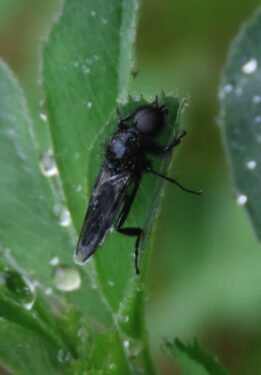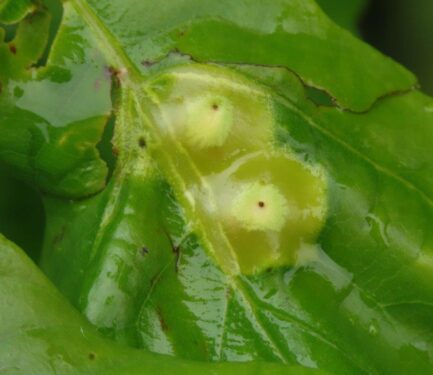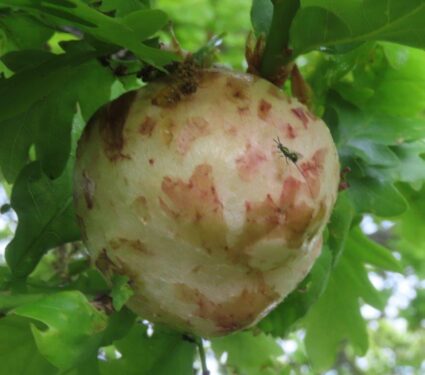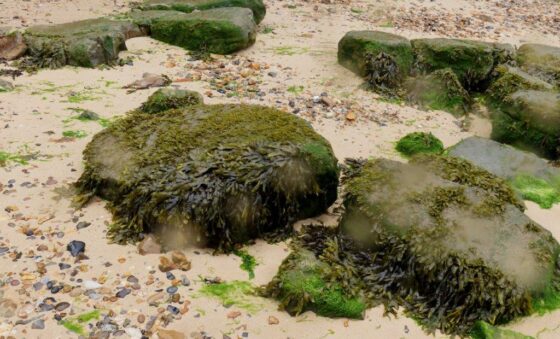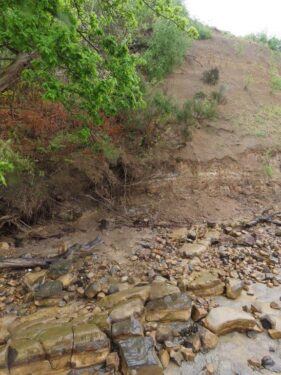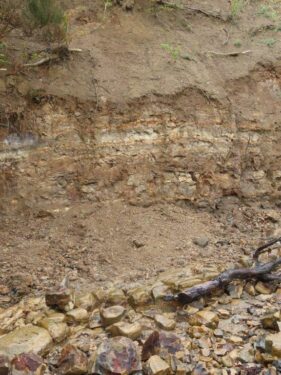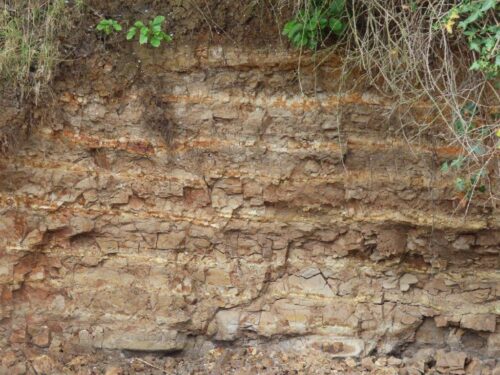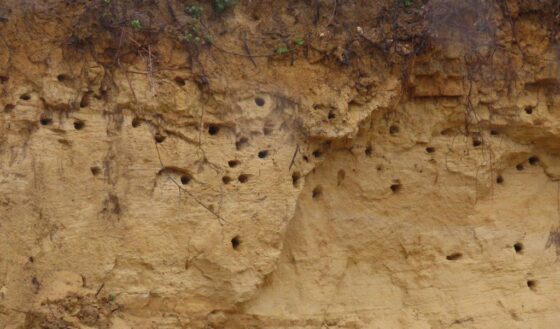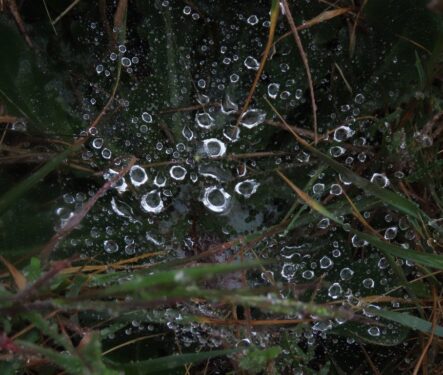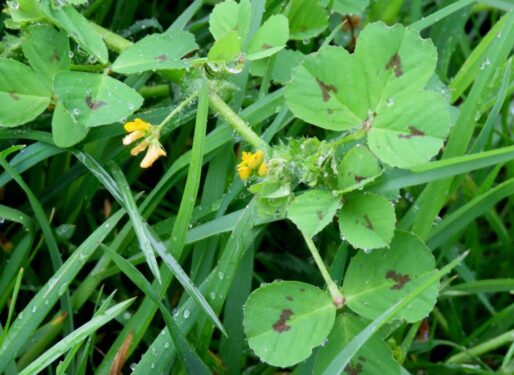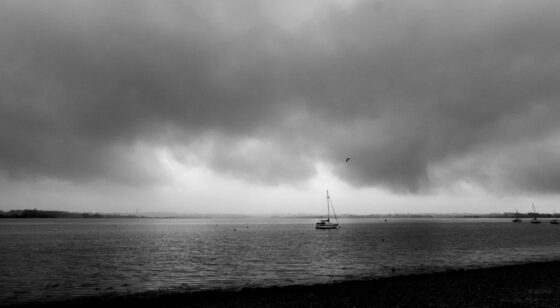Rain, rain and more rain…a feature of our half day walk around beautiful spots of Wrabness, but hopefully not the only memory to be taken away😊 . Our thanks to everyone for their perseverance….’it may brighten up later’….but despite the less-than-perfect conditions we still got a flavour of this relatively unspoilt area, and we hope that it was worth getting a bit damp for!
The morning got off to a mixed start – slight issues with the car-parking payment facilities but the prospect of a coffee and use of a loo in the little community shop more than made up for any initial annoyances. We covered quite a distance over the four hours, our first port of call being the House for Essex, the whacky but very interesting Grayson Perry creation. If you get the chance, do try to visit this on a sunny day, when the whole exterior seems to shine and glow. And to our eyes at least a very fitting addition to the newly-designated Area of Outstanding Natural Beauty.
Next, East Grove was a pleasant little diversion from the main route – a perfect little woodland boasting many plants, including Butcher’s Broom, Bugle, Greater Stitchwort and of course Bluebells aplenty.
The juxtaposition of tidal mud and ancient woodland is exceptionally rare in Essex, and the smell of the estuary was a feast for the nose!
Peering out from the trees, we could see a couple of hundred Dark-bellied Brent Geese on the shoreline. The icon of the Essex coast in winter (we are home to a fifth of the world’s population), the Stour is one of its renowned departure points for its return migration…
…and sure enough, a chorus of burbling, and off they went. Next stop the Taimyr Peninsula? Or at least a staging post in the Baltic.
Walking along the seawall we were able to admire many other shore birds: Shelducks, Oystercatchers, Little Egrets and more. The quiet conditions (hardly any people on foot and a welcome lack of light aircraft overhead which seem to enjoy being noisy), and the damp, still air made Bird Listening (as opposed to Watching) an important part of the day. Farmland birds were in full voice, including Skylarks, Whitethroats and Lesser Whitethroats, with more distant Cuckoo, Nightingale and Yellowhammer.
Along this stretch we found virtually the only insects of any note – St Mark’s Flies. These dangly-legged beasties emerge at roughly the same time as our hirundine visitors, providing food for them after their long flights from Africa. Among the big boys was a smaller, more colourful species, Downland Bibio.
An innocuous field of peas turned out to have a fascinating story – these have been bred to be leafless, the leaflets now being just tendrils which twirl around each other allowing the plants to huddle together, as protection from wind and heavy rains etc. Something we were having to come to terms with ourselves! And some of the Oak trees along the cliff-edge were already laden with galls, even on the leaves which must have burst only a week ago. One or two had huge numbers of large Oak-apples, on one of which we found a micro-hyperparasite, a tiny, long-tailed wasp, presumably a parasite of the gall-causer, itself a tiny wasp!
Next part of the route was along the beach. Of interest was the geology – the cliffs (SSSI) showing ‘ash layers’ in among the London clay… visible evidence of when these parts were covered in ash from volcanic activity in Caledonia many millions of years ago. The rocks – part of the Harwich Stone Band (forerunner of the Rolling Stones??) – from which local VIP buildings such as Colchester Castle have been partially constructed – were all around, to be admired, and some adorned with festoons of seaweed. This beach and a similar one at Harwich are the only natural rocky shores between north Norfolk and north Kent.
Rocks and fallen trees provided a kind of make-your-bum-wet perch on which to eat lunch, though some sensible people in our group found a nice dry boat under tree canopy to eat theirs! The conditions weren’t really conducive to leisurely beach-combing, but a few shells of interest were found, including Portuguese Oysters (a rampant non-native, potentially squeezing out our local native variety), Slipper Limpets, Cockles in a variety of attractive colours and a Shore Crab’s carapace. Another highlight of the shore walk was seeing the Sand Martins’ nests in the sandy banks – one of only three natural martin nesting sites in Essex.
Onward and up the bank onto the footpath we wended our way into the Essex Wildlife Nature reserve. By now the wet weather was starting to really take its toll. The rain soaking up from my feet was meeting that dripping down from my coat, and we began to think we should call it a day a bit earlier than originally planned. This meant missing out the Woodland Burial Site, but perhaps next time! The Nature Reserve – an important site, luckily rescued from development proposals – really does need visiting in the warm (see our evening visit last year, when conditions were perfect… Wrabness Nature Reserve on a summer’s evening | Chris Gibson Wildlife ). Today there was no insect life whatsoever, but a few plants were worth a mention – Field Horsetail (diminutive relative of the giants from which our coal was laid down, eons ago), White Ramping Fumitory, Spotted Medick and Cowslip – and the many funnel-web spider webs, liberally laced with mercurial droplets…
The birds were not performing as we had hoped. Not a peep from the local Nightingales nor the Corn Buntings. But one important memory that we must take back from the nature reserve was the purring sound of the Turtle Doves…sadly such a rare thing to hear these days, due to merciless hunting in certain Mediterranean countries and the lack of suitable habitat (all they can find are agricultural wastelands ravaged by pesticides and totally lacking the seeds of ‘weeds’) for those that do manage to make it. But here at least they can find sanctuary.
At this point our group began to separate – some heading for an earlier train, whilst others of us wandered at a more leisurely pace back to the station. A little stop at the church (unfortunately not open to allow a sit down!), was worth a few minutes of our time, if only to see Annie inside the bell-cage. Apparently the church tower collapsed in the 17th century, when the bell was ‘caged’, and seemingly that is where it will stay for evermore. And further along the road, we encountered the second of The Twelve Days of Christmas birds – Partridges (Red-legged varieties) which were enjoying the pea-fields.
Again thanks to everyone who stuck with us, and hope that we can repeat this, in more favourable conditions another year. Writing this, having been home an hour or so, the sun is shining and we can’t help thinking ‘if only….’…
